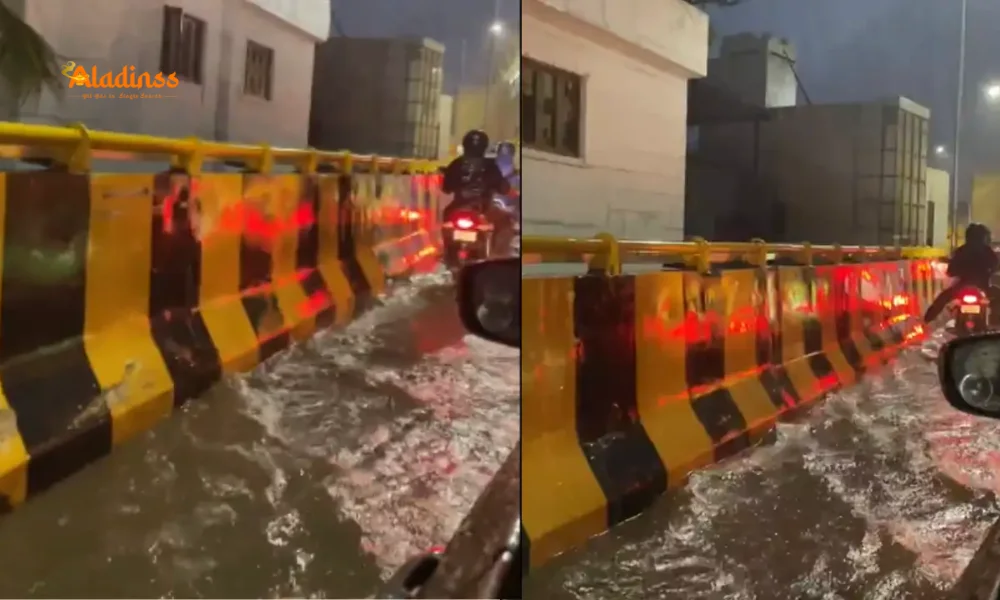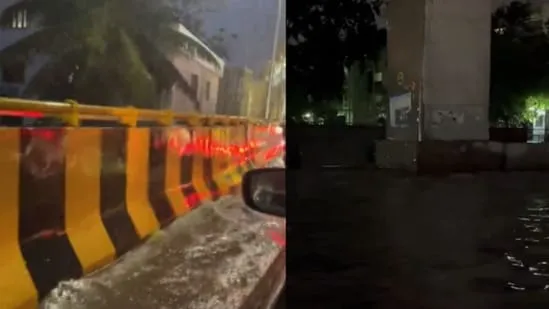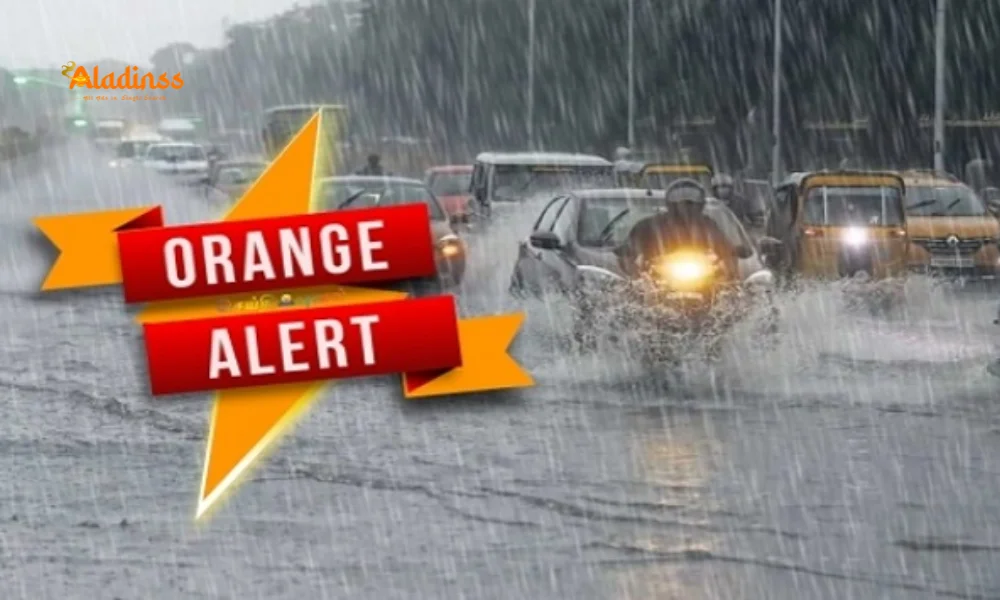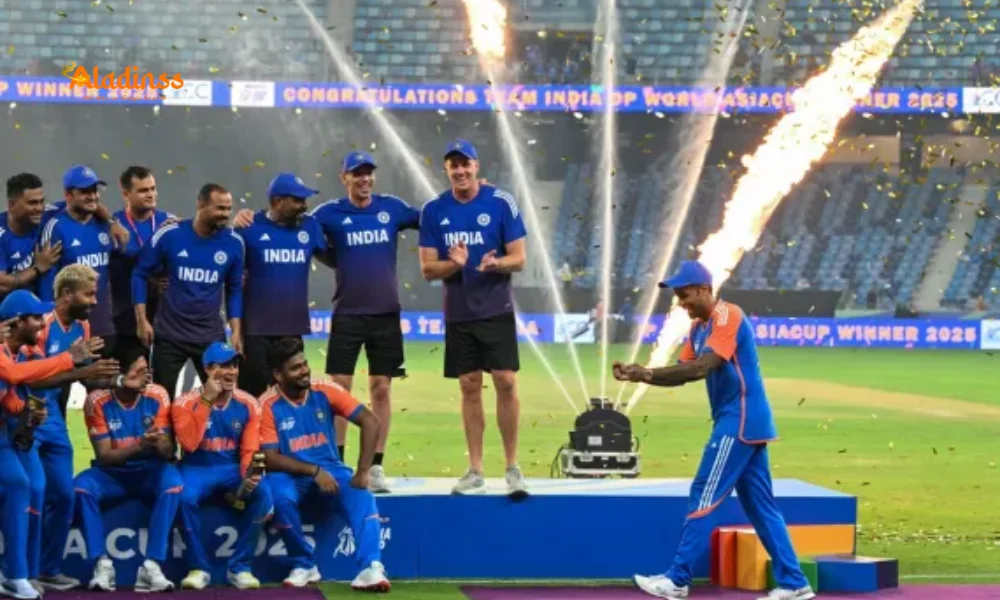Bengaluru’s Double-Decker Flyover Floods After Heavy Rain

Bengaluru’s Double-Decker Flyover Floods After Heavy Rain, Sparks Outrage
Bengaluru’s much-touted double-decker flyover, a flagship infrastructure project aimed at easing the city’s notorious traffic congestion, turned into a virtual “swimming pool” on Monday evening after a heavy downpour. The 5.12-km rail-cum-road structure, stretching from Ragigudda to Central Silk Board, faced severe waterlogging, causing significant traffic disruptions and drawing sharp criticism from residents and commuters. This incident has raised serious questions about the engineering and drainage systems of South India’s first double-decker flyover, constructed by the Bangalore Metro Rail Corporation Limited (BMRCL) at a cost of ₹449 crore.
A Viral Video Exposes Flaws
The heavy rainfall, lasting nearly an hour, exposed critical flaws in the flyover’s design. A video shared by a Bengaluru resident on social media platform X went viral, showcasing the flooded stretch of the flyover. The footage, which depicted water pooling at specific points, sparked a wave of criticism online. One user pointed out structural issues, stating, “This water build-up happens at a specific point where there is no drain. The slope isn’t maintained, and the drains are only on one side.” This comment highlights a significant oversight in the flyover’s drainage system, which failed to handle even moderate rainfall effectively.
Another user sarcastically remarked, “Double-deck flyover in Bengaluru gets flooded in 30 minutes of rain. How can a flyover get flooded? Engineering marvel at best.” Such sentiments reflect the frustration among commuters who expected the flyover to be a game-changer for Bengaluru’s traffic woes. The viral video not only embarrassed the authorities but also reignited debates about the city’s infrastructure preparedness for monsoon seasons.

Rainfall Data and Weather Alerts
According to the Karnataka State Natural Disaster Monitoring Centre (KSNDMC), the rainfall on Monday was significant, with Vidyapeeta recording 34.5 mm, Kengeri 33 mm, and Rajarajeshwarinagar 32 mm. Other parts of Bengaluru received between 10 and 30 mm of rainfall. The India Meteorological Department (IMD) has issued a yellow alert for Bengaluru and other parts of Karnataka, forecasting heavy showers until Thursday. This weather warning suggests that the city’s infrastructure, including the double-decker flyover, may face further challenges in the coming days if drainage issues remain unaddressed.
Design and Purpose of the Flyover
Inaugurated in July 2024, the double-decker flyover was designed to alleviate the chronic congestion at the Central Silk Board junction, one of Bengaluru’s busiest traffic points. The structure, spanning 5.12 km, integrates a four-lane road on the lower deck with the Namma Metro’s Yellow Line on the upper deck. The project, costing ₹449 crore, was heralded as an engineering marvel and a step toward modernizing Bengaluru’s urban mobility. The flyover features loops and ramps to facilitate signal-free travel from Ragigudda to HSR Layout and Hosur Road, aiming to reduce travel time by over 30%.
However, the flyover remains incomplete, with key connecting ramps, including a 1.37-km stretch linking HSR Layout, Ragigudda, and BTM Layout, still under construction. The BMRCL had initially promised completion of these ramps by June 2025, but recent reports indicate that approximately 90% of the work is done, with the remaining sections expected to be operational by mid-September 2025. The absence of these ramps has limited the flyover’s effectiveness, as commuters from areas like Jayanagar East, Bannerghatta Road, and J.P. Nagar cannot fully utilize the structure due to restricted access points.
Public Reaction and Criticism
The flooding incident has fueled public outrage, with many residents comparing the situation to similar waterlogging issues in May. Social media posts described the flyover’s flooding as a “back to square one” moment, highlighting persistent infrastructure challenges in Bengaluru. Photos and videos shared online also showed severe waterlogging beneath the flyover near the Silk Board metro station, where commuters waded through stagnant water, further compounding traffic chaos.
Traffic expert Prof. M.N. Srihari criticized the flyover’s design, emphasizing the lack of multiple entry ramps. “While the flyover is needed, it won’t fulfill its purpose without proper access points. Typically, flyovers are shorter in distance, but this one spans over 5 km, making the need for several ramps even more critical,” he said. Commuters echoed this sentiment, with one motorist from BTM Layout noting, “There’s still a huge traffic jam at Silk Board junction. Hardly a few people are using it from BTM Layout and J.P. Nagar since there is no ramp to enter the flyover.”
Drainage System Shortcomings
The primary issue highlighted by commuters and experts is the flyover’s inadequate drainage system. The lack of drains at critical points and improper slope maintenance have led to water accumulation, turning the elevated structure into a waterlogged mess. Social media posts pointed out that the drains are only on one side, exacerbating the problem during heavy rains. This design flaw undermines the flyover’s purpose of providing a seamless, signal-free commute.
BMRCL officials have acknowledged initial challenges but remain optimistic about future improvements. “Since these are initial days, many may not be fully aware of the flyover route and exit points. Gradually, more people will start using the flyover, which will reduce traffic at Central Silk Board junction,” an official stated. However, the flooding incident has cast doubts on the project’s readiness to handle Bengaluru’s monsoon conditions, especially with the IMD’s yellow alert signaling more rain in the coming days.
BMRCL’s Response and Future Plans
The BMRCL has faced scrutiny not only for the drainage issues but also for delays in completing the flyover’s ramps. While ramps A, B, and C are operational, connecting Ragigudda Metro Station to Hosur Road, HSR Layout, and BTM Layout, ramps D and E remain under construction. These ramps are crucial for enabling a direct route from HSR Layout to Ragigudda and BTM Layout, which would further decongest the Silk Board junction. BMRCL officials have stated that 90% of the work on these ramps is complete, with a revised timeline for completion by mid-September 2025.
The BMRCL is also planning to integrate the Silk Board metro station with the Blue Line (Central Silk Board to KR Puram), using a travelator to connect the two stations, which are 355 meters apart. This integration aims to improve last-mile connectivity for commuters. Additionally, the corporation is exploring the construction of more double-decker flyovers under Phase 3 of the Namma Metro project, covering corridors like JP Nagar to Hebbal and Hosahalli to Kadabagere. However, the recent flooding has raised concerns about whether these future projects will address drainage issues effectively.
Impact on Commuters and Bengaluru’s Infrastructure
The flooding of the double-decker flyover has significant implications for Bengaluru’s commuters, who rely on the structure to bypass the congested Silk Board junction. The waterlogging not only caused delays but also posed safety risks, with commuters struggling through stagnant water below the flyover. The incident has also sparked a broader debate about Bengaluru’s infrastructure readiness, especially as the city grapples with rapid urbanization and increasing rainfall intensity due to climate change.
Urban mobility experts argue that while the double-decker flyover was a bold initiative, its execution has been lacking. The incomplete ramps and poor drainage system have limited its effectiveness, leaving commuters frustrated. Moreover, the reliance on road flyovers to solve traffic issues has been questioned, with experts advocating for greater investment in public transport like the Namma Metro to reduce private vehicle usage.
Comment / Reply From
No comments yet. Be the first to comment!











